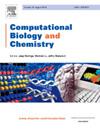Metabolomics and network pharmacology approach to identify potential bioactive compounds from Trichoderma sp. against oral squamous cell carcinoma
IF 2.6
4区 生物学
Q2 BIOLOGY
引用次数: 0
Abstract
This study aimed to profile metabolites from five Trichoderma strains and assess their cytotoxic and pharmacological activities, particularly targeting oral squamous cell carcinoma (OSCC). UHPLC-TOF-MS analysis revealed the presence of 25 compounds, including heptelidic acid, viridiol isomers, and sorbicillinol from the different Trichoderma extracts. Pharmacokinetic analysis showed moderate permeability and low interaction with P-glycoprotein, suggesting good drug absorption with minimal interference in cellular uptake. ADME-Tox analysis indicated limited inhibition of cytochrome P450 enzymes, low renal clearance, which are favorable for maintaining therapeutic levels. Toxicity predictions revealed some compounds with potential mutagenicity, but low hepatotoxicity and skin sensitization risks. Network pharmacology identified MAPK1 as a key target for oral cancer, and molecular docking and induced fit docking studies demonstrated strong binding affinities of Trichoderma metabolites, including stachyose and harzianol, to MAPK1. In addition, molecular dynamics (MD) simulations confirmed stable interactions. In vitro studies on NIH3T3 and YD-10B cells showed significant cytotoxicity, particularly with extracts CNU-05–001 (IC50:10.15 µg/mL) and CNU-02–009 (10.00 µg/mL) against YD-10B cells. These findings underscore the potential of Trichoderma metabolites in drug discovery, particularly for cancer therapies.
求助全文
约1分钟内获得全文
求助全文
来源期刊

Computational Biology and Chemistry
生物-计算机:跨学科应用
CiteScore
6.10
自引率
3.20%
发文量
142
审稿时长
24 days
期刊介绍:
Computational Biology and Chemistry publishes original research papers and review articles in all areas of computational life sciences. High quality research contributions with a major computational component in the areas of nucleic acid and protein sequence research, molecular evolution, molecular genetics (functional genomics and proteomics), theory and practice of either biology-specific or chemical-biology-specific modeling, and structural biology of nucleic acids and proteins are particularly welcome. Exceptionally high quality research work in bioinformatics, systems biology, ecology, computational pharmacology, metabolism, biomedical engineering, epidemiology, and statistical genetics will also be considered.
Given their inherent uncertainty, protein modeling and molecular docking studies should be thoroughly validated. In the absence of experimental results for validation, the use of molecular dynamics simulations along with detailed free energy calculations, for example, should be used as complementary techniques to support the major conclusions. Submissions of premature modeling exercises without additional biological insights will not be considered.
Review articles will generally be commissioned by the editors and should not be submitted to the journal without explicit invitation. However prospective authors are welcome to send a brief (one to three pages) synopsis, which will be evaluated by the editors.
 求助内容:
求助内容: 应助结果提醒方式:
应助结果提醒方式:


